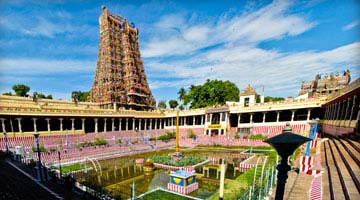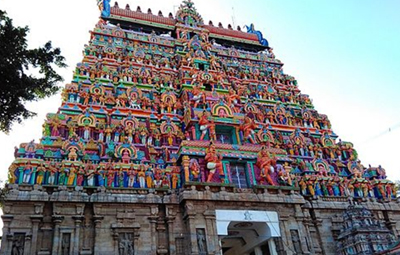Tamil Nadu (/ˌtæmɪl ˈnɑːduː/; Tamil: [ˈtamiɻ ˈnaːɽɯ] (About this soundlisten)) is a state in South India. Its capital and largest city is Chennai. Tamil Nadu lies in the southernmost part of the Indian subcontinent and is bordered by the union territory of Puducherry and the South Indian states of Kerala, Karnataka, and Andhra Pradesh. It is bounded by the Eastern Ghats on the north, by the Nilgiri Mountains, the Meghamalai Hills, and Kerala on the west, by the Bay of Bengal in the east, by the Gulf of Mannar and the Palk Strait on the southeast, and by the Indian Ocean on the south. The state shares a maritime border with the nation of Sri Lanka. Its official language is Tamil, which is one of the longest-surviving classical languages in the world.
The region was ruled by several regimes, including the "three crowned rulers" – Chera, Chola and Pandyan states, which shape the region's cuisine, culture, and architecture. After the fall of the Kingdom of Mysore, the British Colonial rule during the modern period led to the emergence of Chennai, then known as Madras, as a metropolitan city. Modern-day Tamil Nadu was formed in 1956 after the reorganisation of states on linguistic lines. The state is home to a number of historic buildings, multi-religious pilgrimage sites, hill stations and three World Heritage Sites.[8][9][10]
The economy of Tamil Nadu is the second-largest in India, with a gross state domestic product (GSDP) of ₹21.6 trillion (US$300 billion) and has the country's 11th-highest GSDP per capita of ₹229,000 (US$3,200).[3] It ranks 11th among all Indian states in human development index.[6] Tamil Nadu is the most urbanised state in India, and one of the most industrialised states; the manufacturing sector accounts for more than one-third of the state's GDP.[11] Tamil Nadu is the tenth largest Indian state by area and the sixth largest by population.







